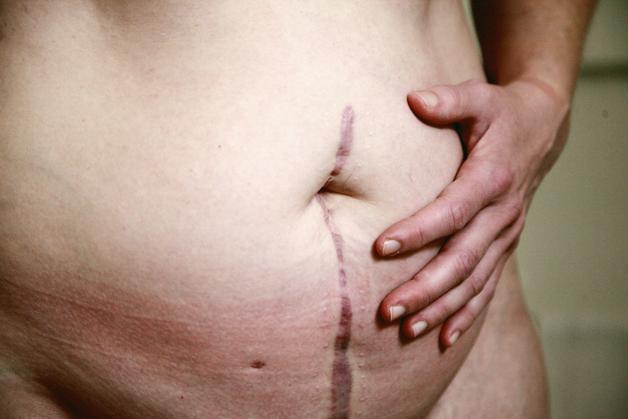The thought of threatened premature labor can feel overwhelming—waves of worry often follow every unexpected contraction or change in sensation. Many parents find themselves questioning each new twinge, wondering, “Is this normal, or should I be concerned?” Seeking clarity in the midst of uncertainty, families want both medical accuracy and emotional reassurance. Here, the spotlight turns to all the information you want to understand: what threatened premature labor really means, how to differentiate it from other sensations, which signs require urgent attention, and most importantly, which actions bring you closer to calm and control. Will rest really help? Does having a history of preterm delivery put your pregnancy in a different category? And, between medical jargon and practical advice, where do scientific advances fit in? Step by step, empowered by knowledge, it becomes possible to keep anxiety in perspective while focusing on what matters: the well-being of your baby, your own peace of mind, and getting support you can trust.
What Is Threatened Premature Labor?
Sudden, rhythmic tightening across the belly—more than just occasional “practice” contractions—can signal threatened premature labor. At its core, threatened premature labor means your body is showing early signs that labor could start before 37 weeks of pregnancy. Think of it as a red flag, but not a verdict: contractions occur, sometimes regularly, sometimes only noticeable with careful attention, yet major cervical changes (shortening or opening) may not have occurred—or are only minimal, below that critical threshold of 25 mm in length revealed by a careful ultrasound.
The word “threatened” is key—it implies risk, not certainty. Your cervix may soften or shorten, you might sense an uptick in vaginal discharge, or notice new pelvic pressure. These changes hover on a continuum, somewhere between normal pregnancy discomfort and the clear, unstoppable progression of preterm birth. It’s like standing at a fork in the road: close observation, thoughtful assessment, and rapid intervention can often steer the course back toward a safer, full-term outcome.
Understanding the Difference: Threatened Versus Active or Inevitable Preterm Labor
What separates threatened premature labor from active preterm labor? The dividing line is both anatomical and practical. Early, ambiguous signs—repetitive contractions, some softening of the cervix—signal a need for watchful eyes. When the cervix drops below 25 mm or begins to open, the risk increases. When dilation or effacement becomes prominent, regular and sustained contractions propel the cervix to open faster—this is active preterm labor. When labor is termed “inevitable,” there’s often significant dilation with little hope of stopping the birth from occurring soon.
This spectrum isn’t just semantic: these distinctions guide medical response. Some families can safely monitor at home, equipped with warning signs and reassurance. Others benefit from the skilled hands and monitoring tools of a maternity ward.
The Importance of Early Recognition
Each day a baby remains in the womb is a day toward stronger lungs, a more prepared immune system, and better long-term health. Recognizing the earliest signals—those subtle warning signs—can be the difference between urgent intervention and avoidable complications. Quick identification means more options: medications to slow contractions, corticosteroids to speed lung development, supportive care that tempers anxiety and boosts resilience.
It’s not just about the baby’s outcomes. Early management gives parents a sense of involvement, a sense of control, and, sometimes, a reassuring explanation for sensations that might otherwise spiral into panic. The medical team’s role blends science and empathy: tracking contraction patterns, monitoring the cervix, and listening—not just to your pregnancy, but to your worries.
Causes and Risk Factors of Threatened Premature Labor
Medical Foundations and Obstetric History
The causes of threatened premature labor are many-layered—rarely stemming from a single issue. Frequently, silent infections (urinary or vaginal) play a backstage role, with symptoms that can easily be missed until contractions begin. Uterine anomalies, such as fibroids or a cervix that has become less robust following surgery, make the environment more prone to early activity. Maternal conditions, such as hypertension, diabetes, thyroid disorders, and long-term illnesses, create a background of vulnerability. And then, there’s the shadow of history: prior preterm delivery or recurrent pregnancy loss shifts the odds—this experience can feel both frustrating and disheartening, leaving parents searching for a sense of agency.
Pregnancy-Specific Factors
Carrying twins, triplets, or more naturally means greater stretching of the uterine wall, increasing the chance of early signals. Too much amniotic fluid increases cervical pressure. The placenta, too, can be implicated: placenta previa (when it lies low in the uterus), abruptions, or a cervix found to be particularly short on ultrasound all play their parts. Early rupture of amniotic membranes changes the picture even more, bringing heightened risk.
Modifiable and Environmental Influences
Daily choices and circumstances echo through pregnancy—tobacco use, substance exposure, ongoing stress, and extreme fatigue all influence uterine readiness. Vigorous activity or jobs requiring long hours on your feet, as well as nutritional gaps and irregular healthcare access, cannot be ignored.
Additional Considerations
Sometimes, factors outside anyone’s control tip the scale: age (younger than 18 or older than 35), genetic factors influencing cervical structure, and social circumstances that shape access to support and resources.
Signs and Symptoms: When Should Parents Be Concerned?
Symptoms Not to Ignore
The line between benign and worrisome symptoms can blur in pregnancy, especially when the mind is on high alert. Subtle cues matter in threatened premature labor:
- Frequent or regular uterine contractions (usually more than four to six per hour, not subsiding with rest or fluid intake)
- Sudden, intense pelvic heaviness, especially if new or escalating
- Dull, persistent lower back pain that feels unfamiliar or intensifies over time
- Unusual vaginal discharge—watery, bloody, or viscous—that may hint at ruptured membranes or early cervical change
- Spotting, especially when it comes with contractions or other symptoms
- Fever, burning or discomfort with urination—potential markers of infection
Braxton Hicks or Warning Signs?
It’s almost a rite of passage: confusing normal Braxton Hicks contractions with threatened premature labor. Braxton Hicks typically resolve with rest or hydration; contractions linked to threat of early labor keep coming, stubborn and unyielding. When in doubt, err on the side of caution—your care team would rather answer a “false alarm” than miss an urgent signal.
Emergency Red Flags
Some symptoms can’t wait. Heavy vaginal bleeding, a sudden large leak or steady trickle of fluid, severe abdominal or pelvic pain, or marked reduction in fetal movement should prompt immediate medical attention. These signs raise concerns for abrupt complications—prompt action can offer the best outcome for both mother and baby.
Diagnosis: How Healthcare Professionals Assess Threatened Premature Labor
Getting a clear diagnosis requires a combination of careful listening, physical examination, and advanced technology. Every detail matters—the frequency and nature of your contractions, the timeline, any previous complications. Blood pressure measurements, gentle abdominal palpation, and sometimes a transvaginal ultrasound (the gold standard for cervical length evaluation) provide essential data.
Fetal monitoring tracks the baby’s heartbeat alongside contraction strength and timing—vital clues in real time, ensuring that both mother and baby are responding well. Additional tools, such as urine and blood tests, hunt for silent infections or underlying health concerns. Vaginal swabs can identify infections and test for fetal fibronectin—when this protein is absent, imminent delivery is much less likely, offering reassurance during tense moments.
Management Strategies: Adapting Care to Each Situation
Threatened premature labor prompts a spectrum of responses—no single approach fits every scenario. When symptoms are mild, with only occasional contractions and a cervix longer than 25 mm, many parents can continue pregnancy at home. Modest lifestyle adjustments, careful follow-up, and practical guidance fill the days.
As symptoms intensify or the cervix shortens, hospital admission becomes prudent. Here, the focus is on close monitoring, rapid responses, and access to therapies: oral medications, IV treatments, or procedural interventions as warranted by your unique situation.
Severe cases call for all hands on deck—specialized maternity units, enhanced monitoring for both mother and baby, and therapies aimed at buying every precious hour or day for fetal development.
Medical Treatments: Slowing Contractions and Protecting Development
When threatened premature labor sends clear signals, immediate action is necessary. The primary aim: give the baby more time. Moderate rest helps calm the uterus, but extended bed rest often does more harm than good, increasing risk of venous thrombosis and loss of muscle strength.
Medications called tocolytics (including nifedipine and atosiban) are often used to halt or reduce contractions, acting as a temporary shield while other treatments take effect. Before 34 weeks, corticosteroids (two injections, spaced 24 hours apart) are indispensable—these accelerate the baby’s lung development, providing resilience against early birth. If labor threatens before 32 weeks, magnesium sulfate is initiated, primarily to protect the developing brain from injury.
Underlying infections, when present, are treated with targeted antibiotics. Specific structural concerns, like a significantly weakened cervix, may prompt consideration of a cervical cerclage (a supportive stitch) or a special pessary. However, these measures are typically chosen outside acute events, guided by previous history and sophisticated ultrasound findings.
Lifestyle factors come into play: gentle but regular physical activity, avoidance of extended standing, and—when necessary—compression stockings for comfort and safety.
Home Monitoring and Life after Hospitalization
Leaving the hospital doesn’t signal the end of vigilance. Ongoing care means regular check-ins, home tracking of new symptoms, and adjustment of daily routines. Self-awareness—watching for changes in discharge, frequency or character of contractions—empowers parents while reinforcing the partnership with the care team.
A network of support—medical professionals, family, friends—is more than a comfort. It’s an essential resource for rest, stress relief, and the calm needed to focus on both physical and emotional needs.
Psychological support is often undervalued, but stress and anxiety can amplify every worry. Access to counseling, open lines of communication, and moments for rest and relaxation matter greatly.
Preventing Threatened Premature Labor: Steps for a Safer Pregnancy
Not every risk factor is modifiable, but proactive action can dramatically reduce chances of threatened premature labor. Key steps include:
- Adopting a healthy lifestyle—avoiding tobacco, alcohol, and other substances, and maintaining balanced nutrition
- Addressing infections early—quick screening and prompt treatment of urinary or vaginal infections protect both mother and baby
- Adjusting work and physical demands—modifying tasks to prevent excess strain, with gentle activity encouraged under guidance
- Managing stress—mindfulness, relaxation, and carving out space for enjoyable activities
- Ensuring frequent medical follow-up—cervical length ultrasounds and early identification of high-risk features
- Progesterone therapy for those with known risk factors (e.g., a very short cervix, or a history of preterm birth)
- Reaching out for support—accepting help and open communication reduce both practical and emotional burdens
Potential Complications and Impact: Short and Long Term
Implications for Babies
Premature babies, especially those born before 37 weeks, can experience breathing difficulties, infections, and challenges related to underdeveloped organs. The earlier the birth, the more significant the risks. Modern neonatal care, however, has boosted survival and outcomes, giving hope and options that barely existed only a generation ago.
Challenges for Parents
Threatened premature labor often interrupts plans, disrupts routines, and introduces uncertainty into daily life. Hospital stays, medication schedules, and strict monitoring routines can feel exhausting—emotionally and physically. Parents often contend with feelings of anxiety, frustration, or sadness; these responses are common and entirely understandable. That’s why psychological and emotional support stand shoulder-to-shoulder with medical care—helping each parent find their own best way forward.
Emotional and Psychological Support: Caring for Parent and Baby Alike
Fear, anxiety, and uncertainty are frequent visitors when threatened premature labor enters the picture. Open, honest conversations—with partners, family, or healthcare providers—lay the foundation for emotional relief. Professional support is available: therapists, counselors, and parent groups (both in-person and virtual) create communities built on understanding and strength.
Daily routines can be reshaped with help: household tasks shared, new priorities set, small moments of rest or enjoyment woven back in. The path forward is seldom linear, but flexible adaptation and a focus on well-being help keep balance and perspective.
Latest Research and Promising Advances
Science is on the front line, developing ever more precise ways to both predict and manage threatened premature labor. New biomarkers—tiny molecular signals found in blood or bodily fluids—are improving risk identification before symptoms ever start. Treatments become more sophisticated by the month, from novel medications that modify uterine activity to advanced forms of progesterone and anti-inflammatory agents, all geared to personalizing care.
Neonatal intensive care units (NICUs), long associated only with crisis, now symbolize hope. Early corticosteroid administration, magnesium sulfate protocols, and the burgeoning field of stem cell therapy may all light the way toward improved long-term neurodevelopmental outcomes for the tiniest newborns.
When to Seek Urgent Medical Attention
Certain symptoms demand swift action. Regular, painful contractions before 37 weeks that don’t subside with rest, heavy bleeding, sudden or persistent fluid loss, severe pain, or a sharp decrease in the baby’s movements are not to be watched at home. Rapid professional assessment can be transformative for both baby and parent.
Key Takeaways
- Threatened premature labor is a warning—extra attention, not inevitability. Early recognition, timely responses, and individualized care often keep pregnancies moving safely forward.
- Be vigilant for new or persistent uterine contractions, cervical changes, unusual discharge, pelvic discomfort, or any red-flag symptoms.
- Causes range widely, including infections, uterine or cervical structure, past obstetric events, lifestyle, and more.
- Scientific advances—from predictive markers to smarter therapies—offer new reassurance and powerful ways to intervene.
- Never underestimate emotional well-being. Psychological support, reliable information, and a steady network significantly ease the path.
- For expert guidance, trustworthy health information, and free child health questionnaires tailored to your needs, download the Heloa app at every step of your family’s journey.
Questions Parents Ask
Can threatened premature labor go away on its own?
Absolutely, it is possible for signs of threatened premature labor to settle without progressing to an early birth. Many parents notice contractions or discomfort that gradually fade, especially when factors like dehydration or temporary physical exertion are addressed. Rest, careful hydration, and attentive monitoring often help reduce symptoms. However, each situation is unique, and regular follow-up with a healthcare provider is essential to ensure both parent and baby remain safe and well-supported.
Does threatened premature labor always result in preterm birth?
Not at all. Experiencing threatened premature labor does not mean that an early birth is inevitable. With early detection and appropriate support, many pregnancies continue safely to term or near-term. Treatments and lifestyle adjustments can greatly reduce the risk of an early delivery. It is natural to feel worried, but the presence of symptoms does not guarantee a premature birth. Many families experience a positive, reassuring outcome.
What should I do if symptoms of threatened premature labor appear at home?
If you experience regular contractions, pelvic pressure, unusual discharge, or back pain before 37 weeks, try to stay calm—these sensations can have many causes. It can be helpful to rest, drink water, and observe whether symptoms subside. If they persist or intensify, or if you notice heavy bleeding, fluid loss, or a significant reduction in your baby’s movements, contacting a healthcare professional promptly is the most reassuring step for your peace of mind and your baby’s health.










